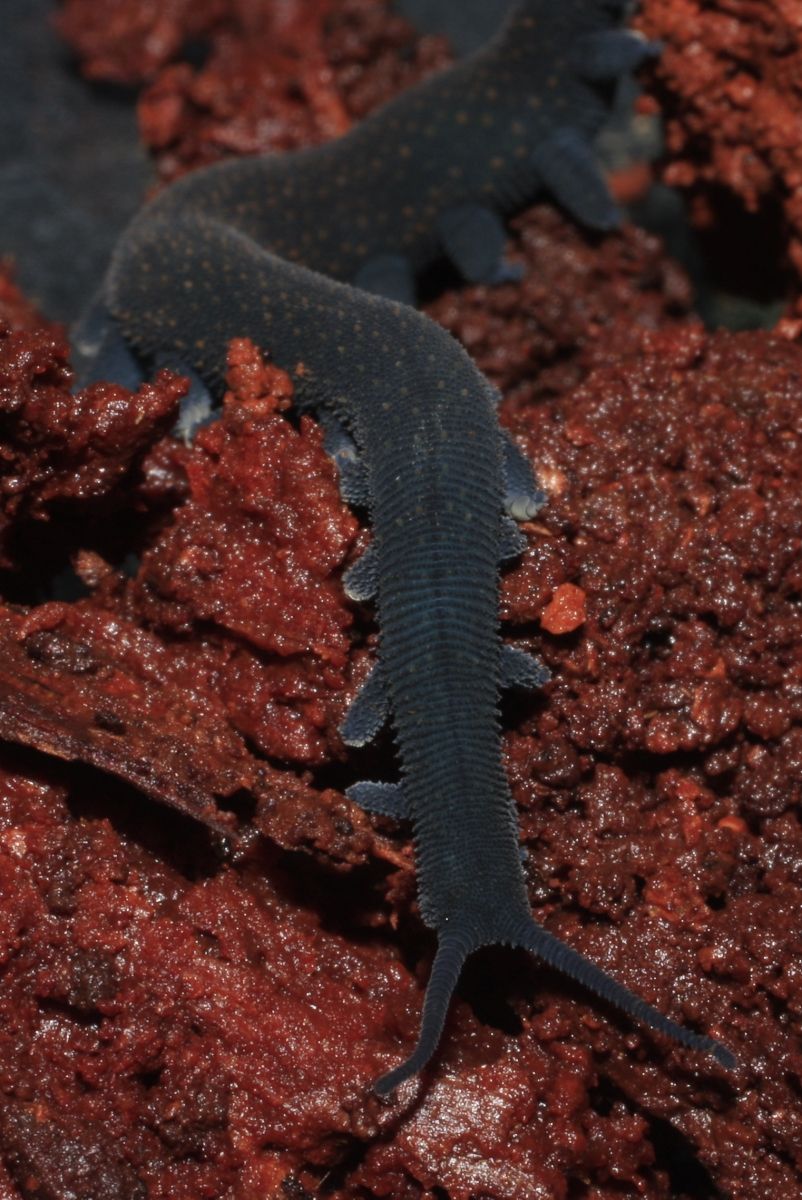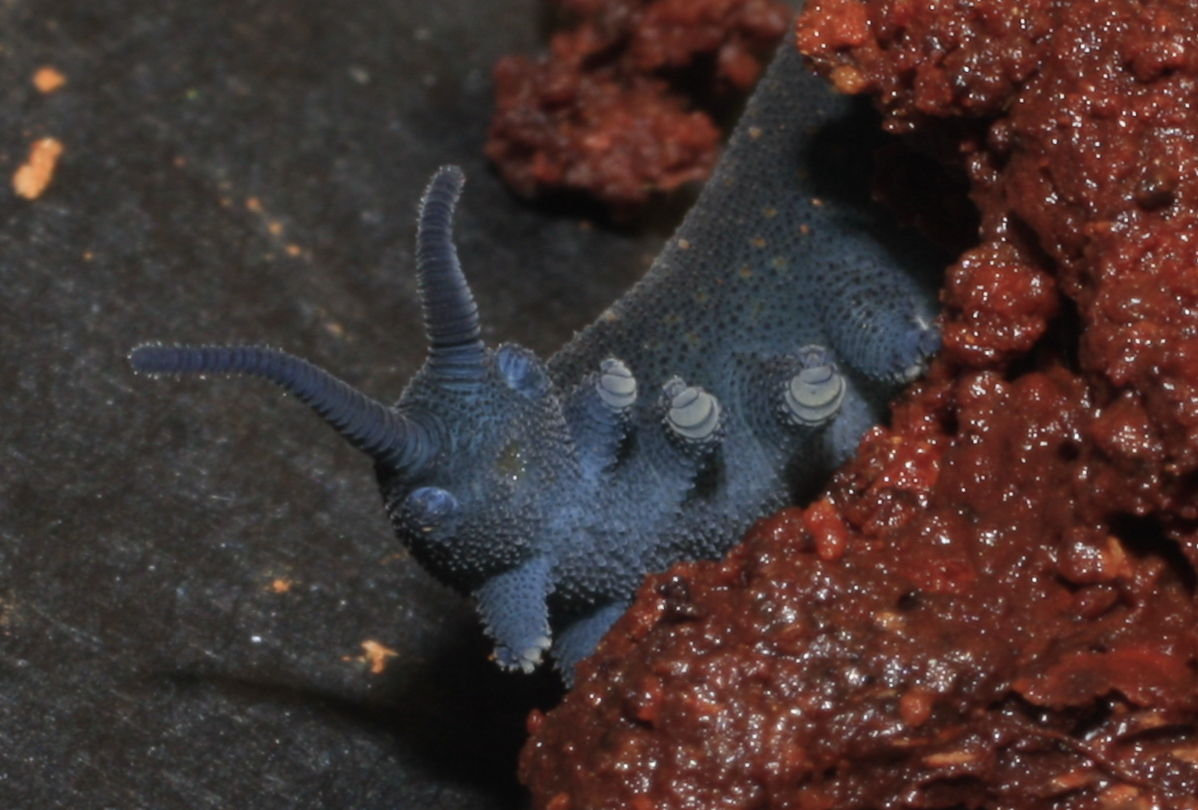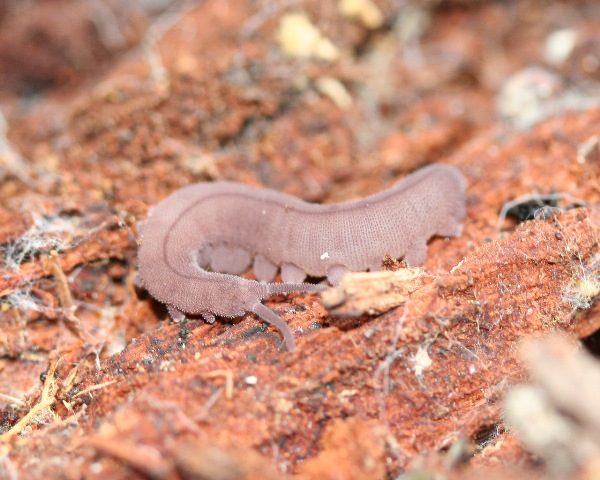Phylum Onychophora
Common name: velvet worms
Overview
Onychophorans are soft-bodied, worm-like invertebrates that have been considered an intermediate link between annelids and arthropods, although it appears they are more closely related to arthropods. Their worm-like body is not obviously segmented like annelids. However, their head is composed of three segments with a pair of antennae and usually a pair of eyes on the first segment along with a pair of ducts, called oral papillae, that secrete a sticky substance which dries on contact with air and is used for prey capture and to deter predators. The second head segment has a mouth with paired, toothed, sickle-shaped jaws. Unlike arthropods, onychophorans do not have a stiff exoskeleton. Their thin, flexible cuticle is covered in minute tubercles that give them a velvety appearance and their common name - velvet worms. The tubercles are also sensory and detect vibrations and scents. Onychophorans have many pairs of lobe-like, unsegmented, stumpy legs (14-16 pairs in Australian species and up to 43 pairs in some overseas species), which have a series of pads towards the end and a pair of claws at the tip. Their tracheae are always open and as a result they require a humid environment to avoid desiccation. They range in size from about 2-10 cm in length, and are generally blue-grey or brownish in colour, often intricately patterned with stripes or spots.
Distribution and diversity
Onychophorans occur largely along the wet eastern and south-eastern margin of the continent, but four species are also recorded south-western Western Australia. The group is undisputedly Gondwanan in origin, with two families and about 165 species described mainly from the southern hemisphere, while in the northern hemisphere they are only found in tropical and subtropical regions. There are currently 71 described species from Australia in 31 genera accommodated in one family (Peripatopsidae), with most species having been recognized within the last 10-15 years. However, there are many undescribed taxa and the true size of the Australian fauna has been estimated at 250 species.
Life cycle
In many onychophorans, the male indiscriminately attaches a spermatophore (sperm packet) to the body of the female. The tissue beneath the spermatophore dissolves and the sperm travel through the female�s body to the ovaries where they fertilse the eggs. Alternately, the males of some species deposit their spermatophores directly into the genital opening of the female. In several species, the males place their spermatophores on their heads, ready to present them to a female. Some have developed elaborate structures, including spikes, spines, hollow stylets, pits, and depressions to hold the sperm and/or assist its transfer to the female. Onychophorans either lay large yolk-filled eggs into the soil and leaf litter or retain the eggs within the female and the young are born live. Immature onychophorans look like miniature adults with reduced pigmentation and go through several moults before adulthood.
Feeding
Although slow moving, onychophorans are active nocturnal predators that feed on a wide variety of small ground-dwelling invertebrates. They are able to capture prey several times their own size and up to 30 cm away with a sticky substance that they eject from the oral papillae in their head. Once immobilised, onychophorans use their jaws to break through the prey�s cuticle and secrete digestive saliva onto the exposed flesh which is then sucked up into the mouth.
Ecology
In Australia, onychophorans occur in eucalypt forests and woodlands, tropical and temperate rainforest, moist coastal areas and sub-alpine regions. To avoid desiccation they are restricted to damp microhabitats and can be found within rotting logs, under stones, in leaf litter and soil, and in caves. However, some species are able to survive drought and severe cold by going into torpor. When present, their predatory impact is likely to be significant; however, their effect on ground-dwelling invertebrate communities is largely unknown.
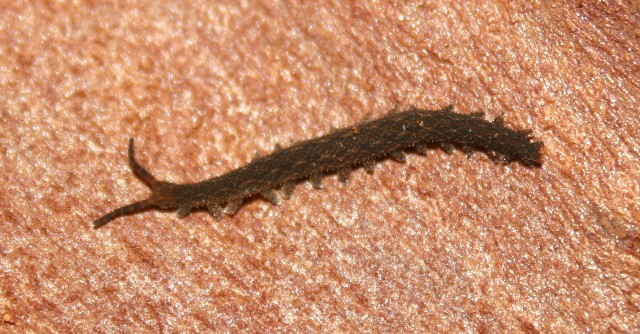
Species of Onychophora from Denmark
Image credit: Photographer: Mark Harvey
� Western Australian Museum
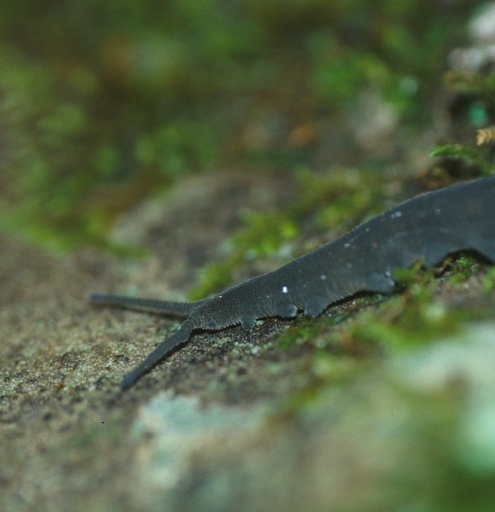
Onychophora
Image credit: Photographer: Erich S. Volschenk
� Western Australian Museum
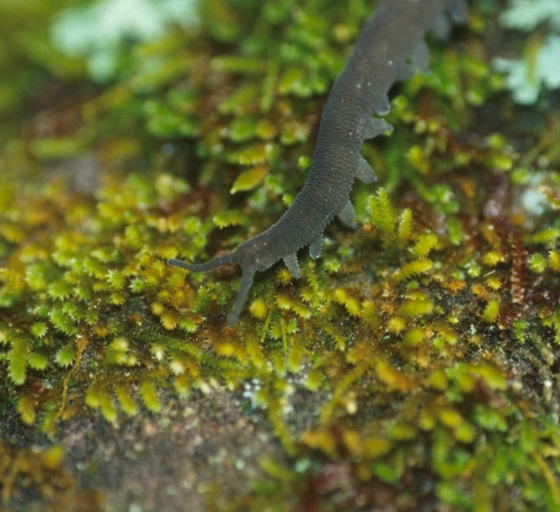
Onychophora
Image credit: Photographer: Erich S. Volschenk
� Western Australian Museum
References and further information
ABRS Australian Faunal Directory: Onychophora
Atlas of Living Australia: onychophora
Encyclopedia of Life: Nemertea
Tree of Life: Onychophora
